

SA Youth connects young people to work and employers to a pool of entry level talent.
Are you a work-seeker?
While the deck has always been stacked against women, COVID-19 has brought into sharp focus the staggering inequalities and barriers that women face in finding and keeping work. Reports of increased gender-based violence, missed educational opportunities, labour market discrimination, and precarious work are just some of the barriers that young women disproportionately face. Never has it felt more true that women need to work twice as hard to get half as far.
The Coronavirus pandemic provides a unique opportunity to build back more just and inclusive societies by driving new models for equitable growth. This Women’s Month edition of Breaking Barriers explores the barriers young women face, and the solutions that are needed to support young women’s equal participation in and contribution to society.




Young women face more penalties in trying to enter the labour market, yet perform as well (if not better) when they are able to find work. Data collected over the last five years1shows that women are 6-8% less likely to be working than men and are also likely to earn less than their male counterparts. Yet, the same data set shows that once in work, young men, and young women perform at the same level. There is little difference in their likelihood of success, ability to perform in the job, or to be retained in work.
The research shows that every barrier keeping young people out of work is higher and harder for young women. They have less time to search for work, more childcare responsibilities, less money to apply for jobs, less time to volunteer and network, and more risk of harassment if they do get the job interview.
They are also less likely to have some of the tangible and intangible attributes valued for work, such as a high school qualification, a driver’s licence, and confidence in looking for and finding work.
And yet the evidence is clear about the benefits of women’s economic and social participation in the economy:
Figure 1: Women are less likely to be working and earn less than their male counterparts
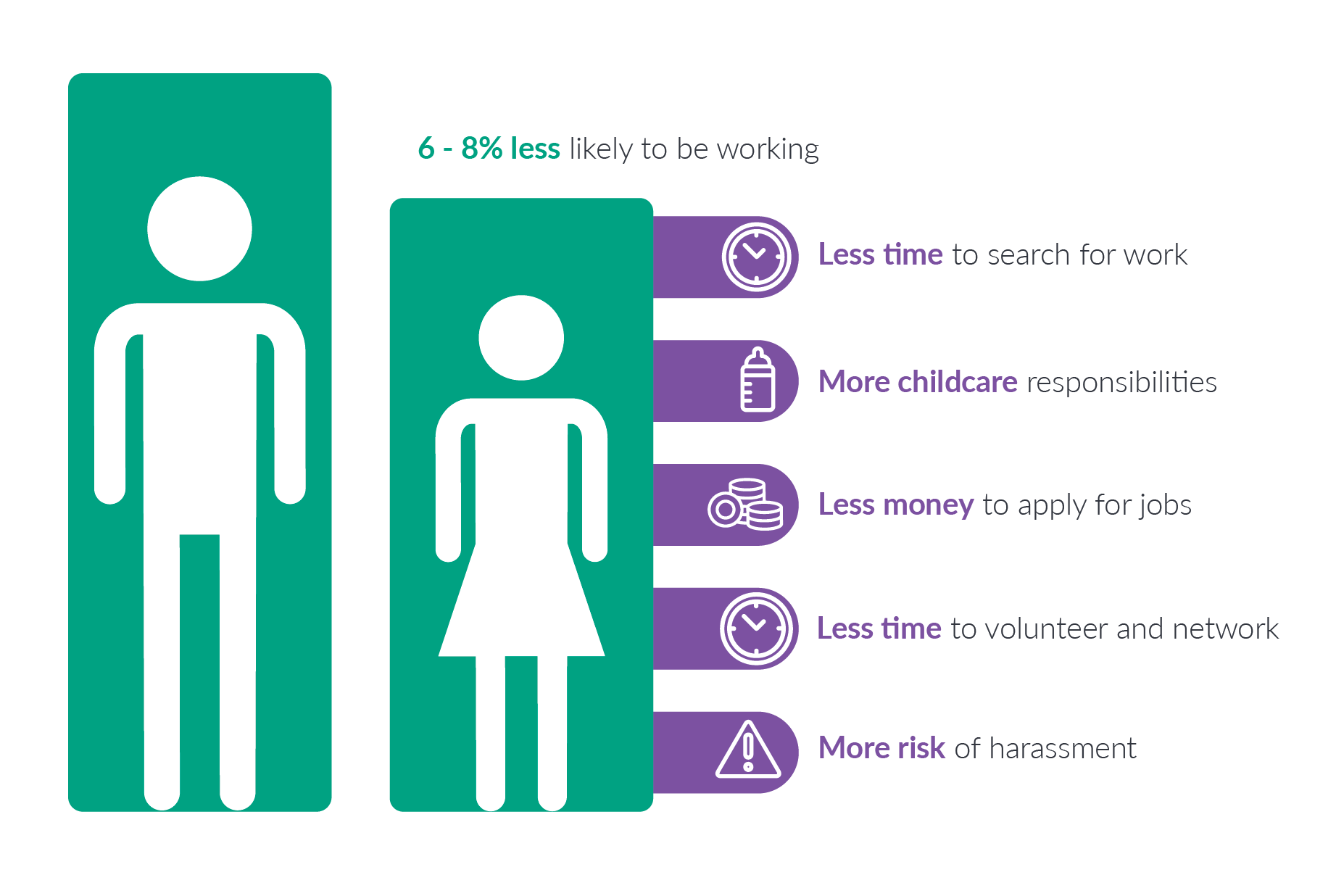
Women have been harder hit by unemployment compared to men as a result of the COVID-19 pandemic. Recent findings from a survey conducted by a collaboration of over 30 South African researchers4 finds that women account for two-thirds of the 3 million net job losses recorded so far.
Moreover as the economy has begun to reopen, young women have struggled more than young men to resume work. Data collected by Harambee shows that during lockdown level 4 (mid-May), employment rates for men fell to from 30% to 23% and for women from 23% to 18%. Following the move to lockdown level 3 however, employment for men rose close to pre-lockdown levels, whilst employment for women remained at 18%.
Figure 2: Women are less likely to bounce back into employment after the COVID-19 pandemic
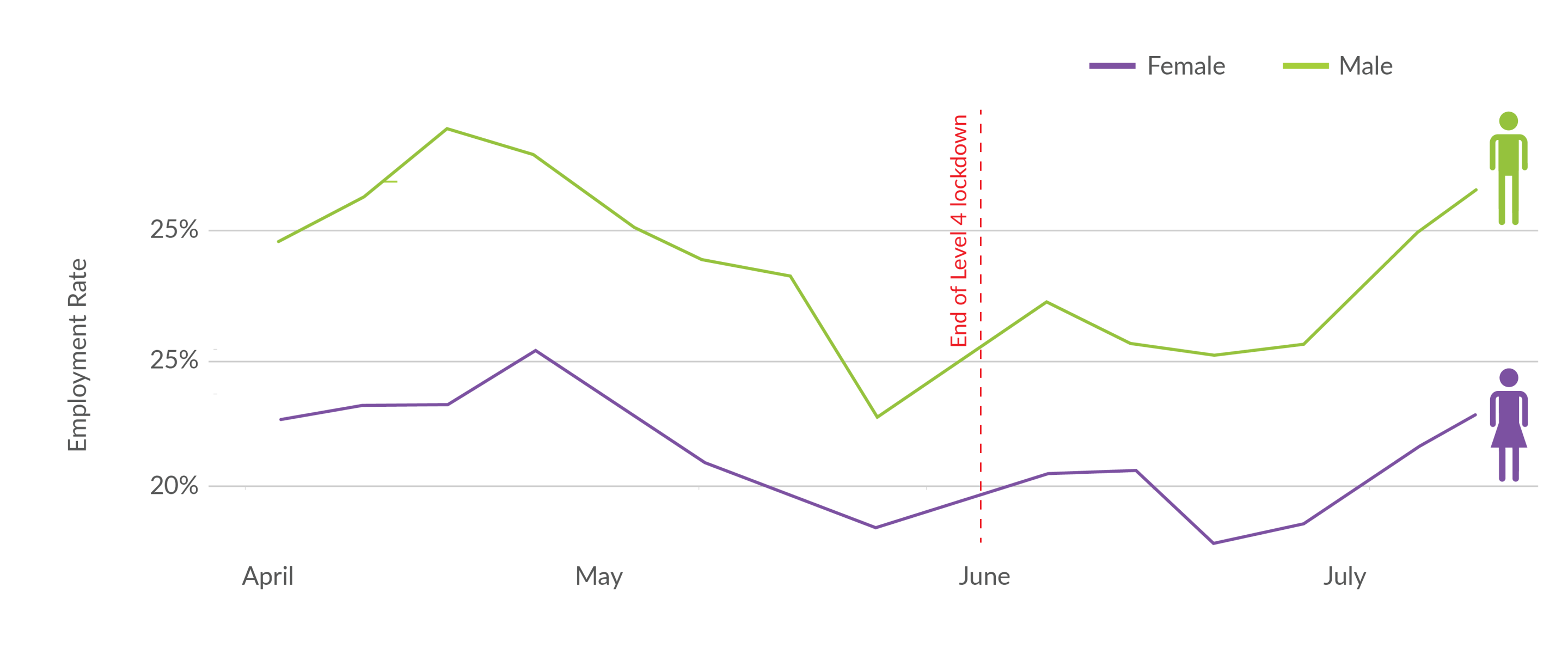
Source: Harambee 2020
Solutions that can help women regain a foothold in the economy include:
One in every six working South Africans contributes to the informal economy; nearly half of these are women. Recent research5finds that during lockdown level 5, women doing informal work saw a decrease of 49% in typical hours worked, while men only saw a 25% decrease. Additionally, for women in informal work, typical earnings decreased by nearly 70%.
The size of the informal economy is set to increase, especially as the number of jobs available to young people in the formal sector shrinks as a result of COVID-19. Women in the informal economy are often doing precarious work,6 occupying some of the lowest paying jobs (such as personal care services, domestic services and childcare services) and face the challenges of poor and irregular pay, unstructured or non-existent contracts, and inconsistent income. A range of solutions are needed to support and sustain women’s livelihoods in the informal economy such as access to markets, social protection, targeted women-led SME relief schemes and micro-insurance.
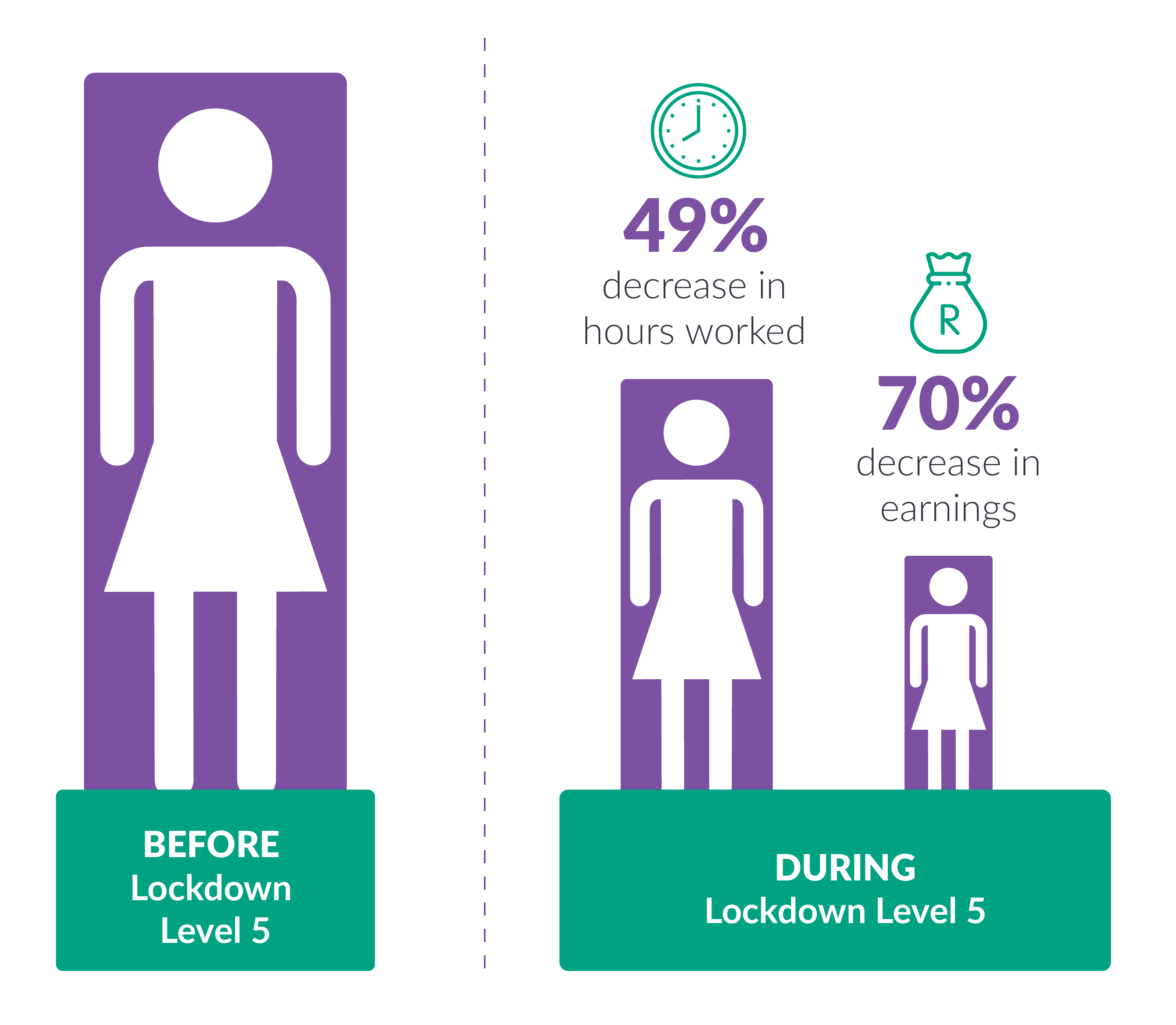
The plumbing industry is working to challenge gender stereotypes about what work women can do. In South Africa, less than 5% of plumbers are women. The Institute of Plumbers South Africa (IOPSA) is working to unblock opportunities in the trades and has completed a programme in which young women made up 60% of the participants. The results showed that young women can perform and succeed in this traditionally male-dominated profession – they outperformed their male counterparts in both the theoretical and practical elements of the programme.
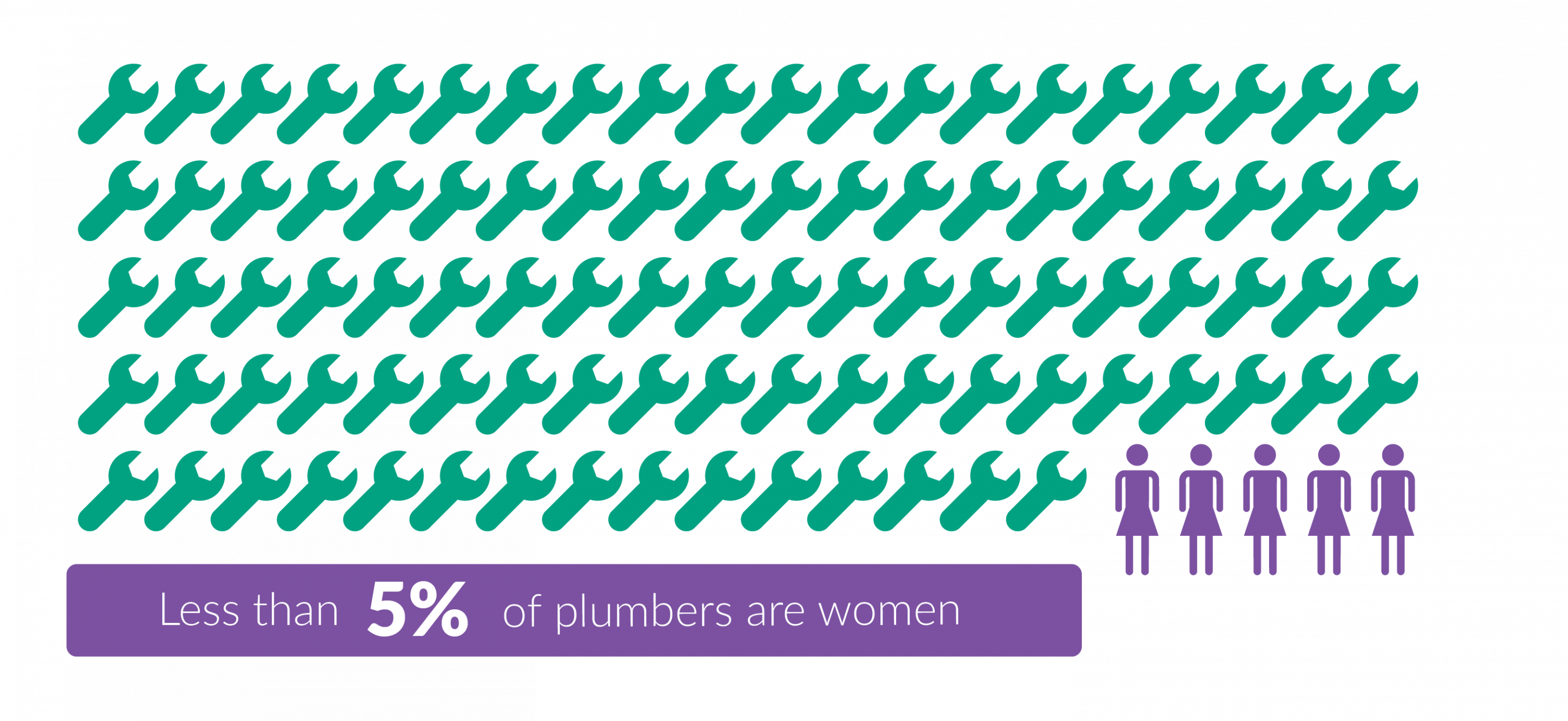
Lockdown closures of ECD programs have meant that 175,000 in the ECD workforce have had to stop working (many in the informal sector), reducing ECD care for up to 1 million young children.7 The safe re-opening of ECD centres continues to be a priority during the COVID-19 crisis, without putting children and caregivers in harm’s way, but also recognizing the need for care options for working parents. Estimates suggest that sector could be grown to provide direct ECD opportunities to 100,000 and supporting at least 1 million children under the age of four, while also unlocking labour market entry of their caregivers.8
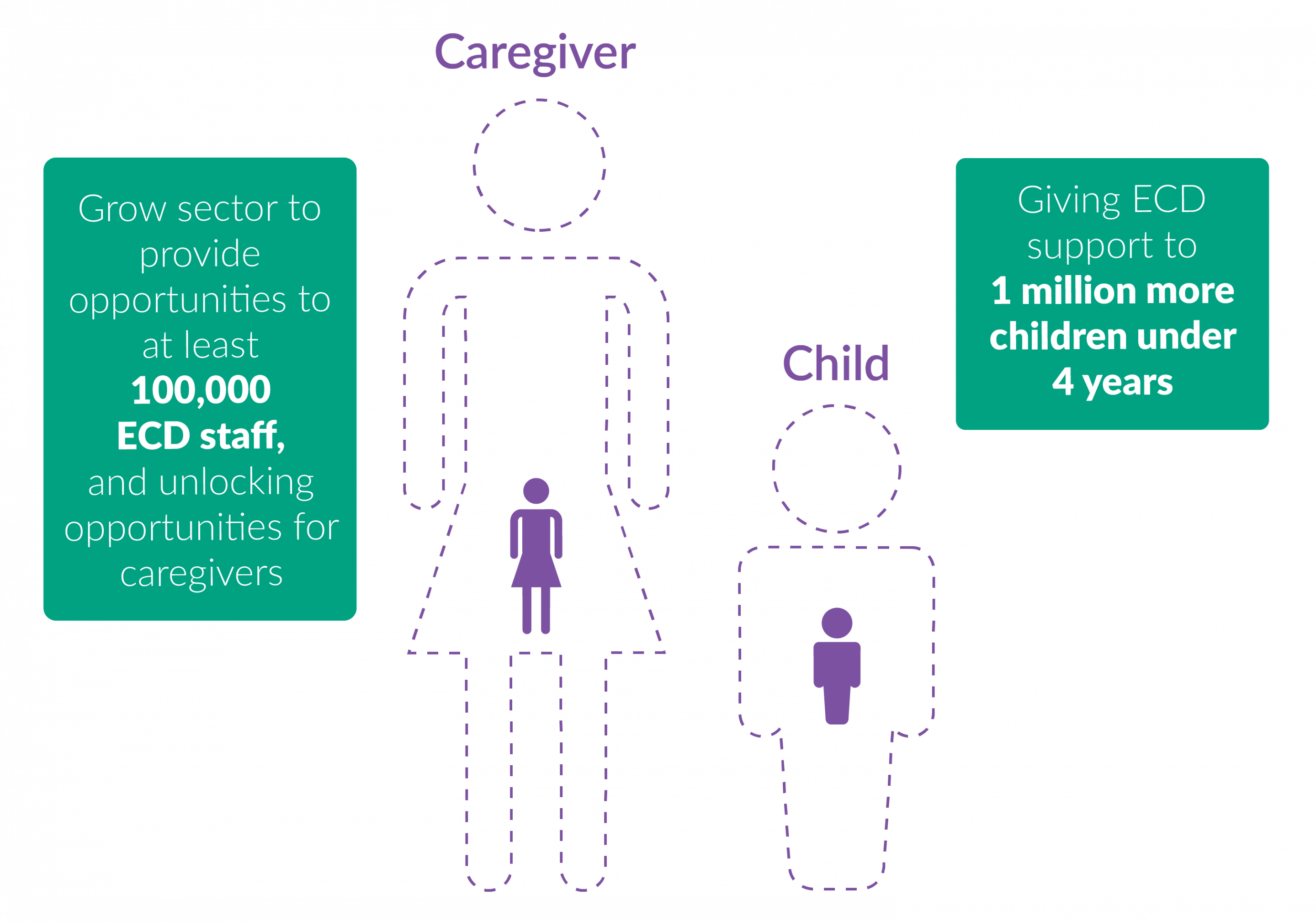
The National Income Dynamics Study (NIDS) is a national household panel study conducted in South Africa from 2008 – 2017. The nine year study comprised of a nationally representative sample of over 28,000 individuals in 7,300 households across the country. In 2020, a follow up survey with a sub-sample of adults from NIDS 2017, participated in Coronavirus Rapid Mobile Survey (NIDS-CRAM), which investigates the socio-economic impact of the national lockdown.
Figure 6 showcases reported job losses over the period February-April 2020. The NIDS-CRAM 2020 Wave 1 data identifies that 17-million people (9-million men and 8-million women) were employed in February 2020 but only 14 million people (8-million men and 6-million women) were employed in April 2020. This means that 3 million fewer people were employed in April compared to February, and of the 3 million, two-thirds were women.*
Out of the sample of 7,000 participants, 30% of females and 20% of males reported job losses in this period.
*The QLFS sample is considerably larger than the NIDS-CRAM sample and is more representative of the 2020 population however at present the NIDS-CRAM is the only current ongoing panel survey looking at SA labour market dynamics over time. Until QLFS data is released, the high-level trends evident in this survey are indicative of underlying labour-market dynamics in South Africa in 2020.
